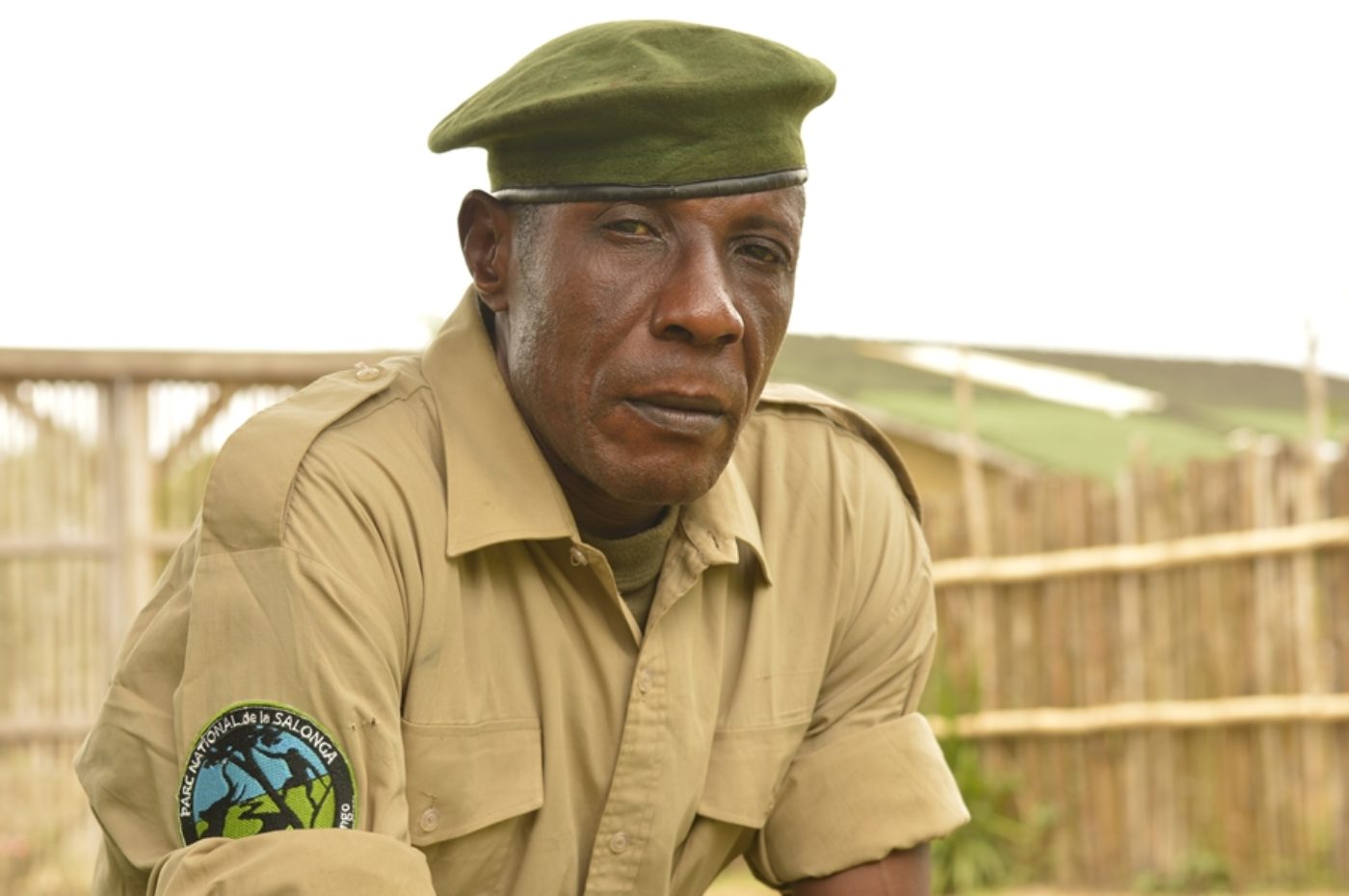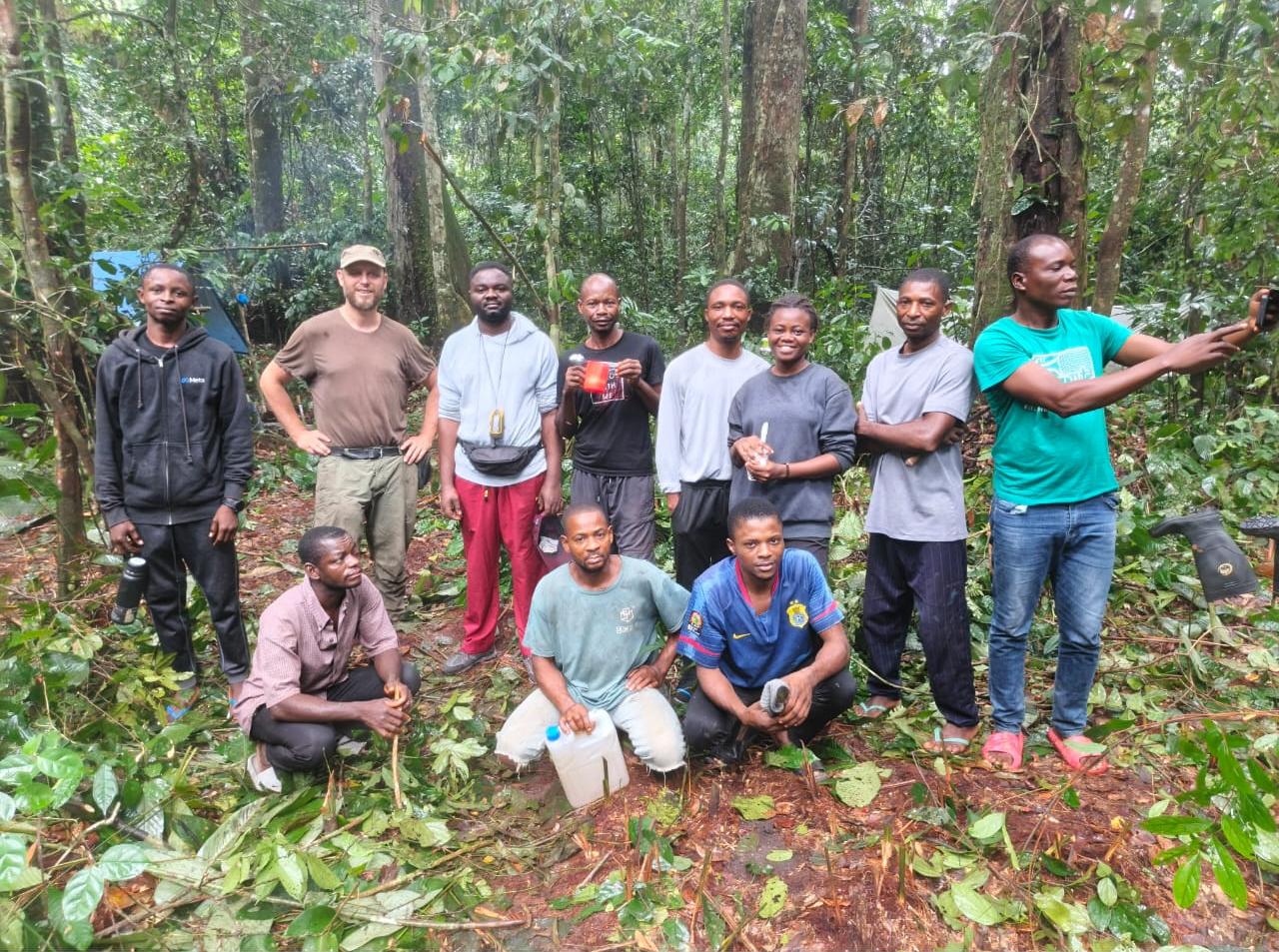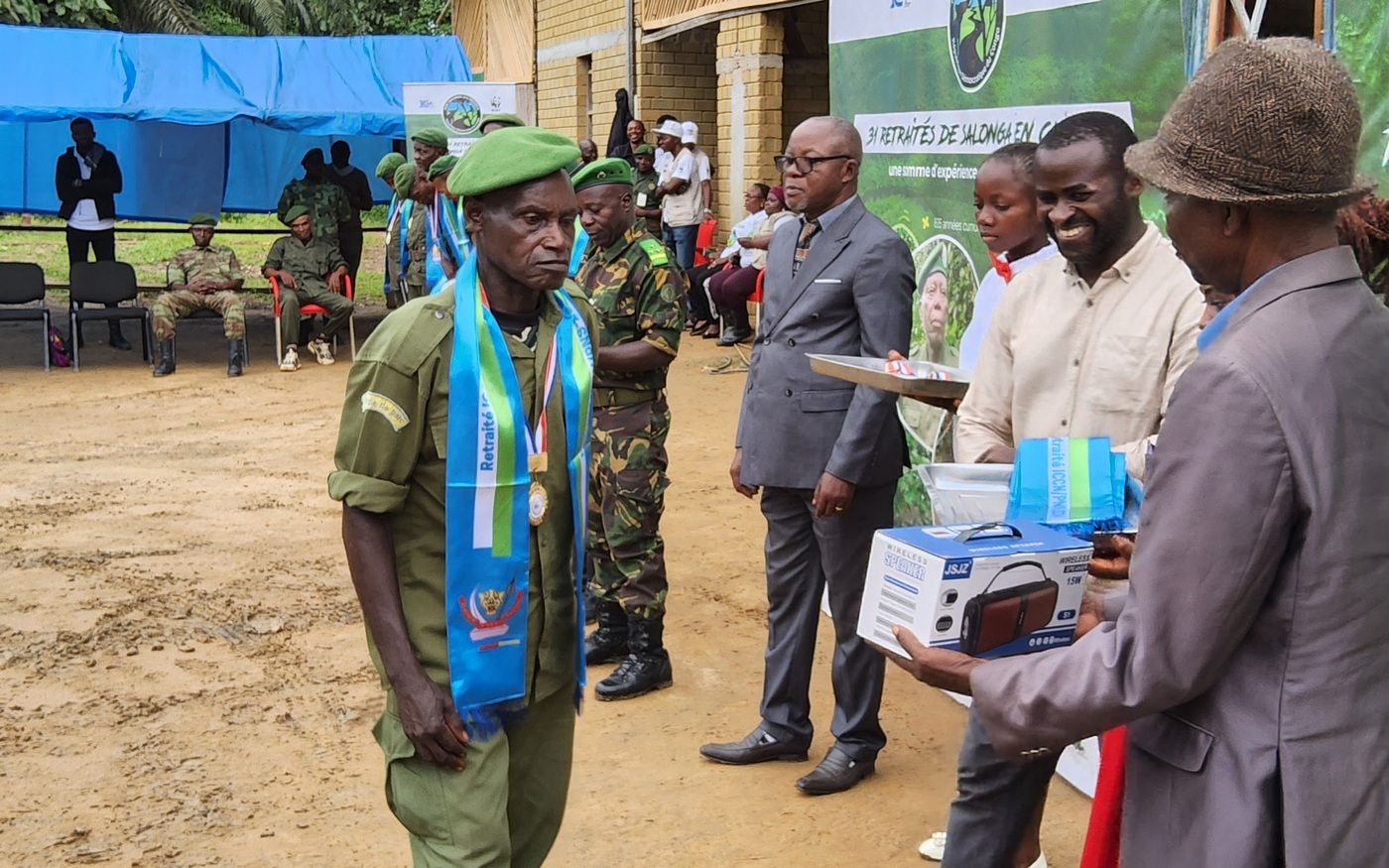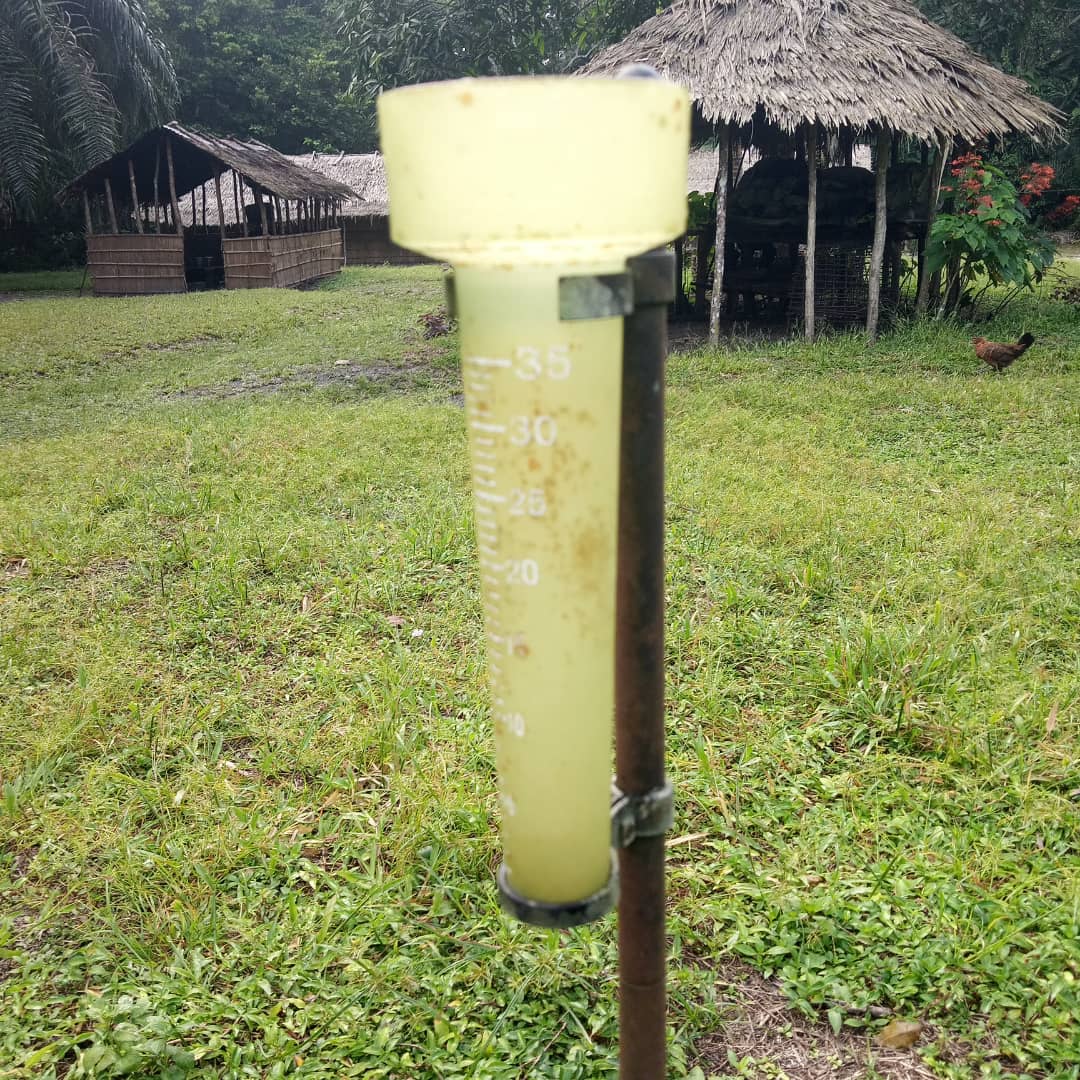Steve Ibamba, 56years old, tall, slender and muscular, has been an ICCN ranger in Salonga National Park since 1988. This work brought him lots of joy, exciting moments and hard times too.
Working as a ranger in Salonga is a physically extremely challenging job. It is clear to Steve that he cannot continue indefinitely. This page of his life will soon be turned. One can read the acute awareness in his look as he approaches this important threshold of his life.
Thinking about retirement from being a ranger while carrying responsibility for his family is not just a creative exercise: “I have seen colleagues retire and their lives very quickly deteriorated because they did not prepare for it. How can I continue to live with dignity, me and my family, when my job ends in a few years? Steve wonders.
“I have been thinking about this for a long time and trying to identify the kind of activities I can do in this isolated region. One day I learned that the new management of the park had set up a rural development project with the surrounding farmers. I wanted to know more”.
The Pilot Farms Initiative
In 2015, the park management set up activities to provide advice to local farmers in the corridor between the two blocks of Salonga National Park.
The goal is to establish farming practices that can provide healthy food for the farming families and produce a surplus of agricultural commodities that can be sold to generate cash income.
These farming practices are piloted with model farmers on their land and who later serve as an example for other farmers. The underlying idea is to show that agriculture with little to no forest loss is possible, slowly setting examples and moving away from shifting cultivation mostly practiced throughout the region and the country.
At present, 10 model farmers work around Monkoto.
This innovative agriculture must also be profitable: the new methods applied by the farmer help him or her to earn an income that makes other sources of cash income like hunting for bushmeat in the close-by park unattractive or unnecessary.
The pilot farmers are selected in consultation with local communities via their local development committees (CLD). The selected farmers are then trained to apply the new agricultural techniques which were adapted to the local context.
They also learn about how to best use their farm land space and accounting skills to manage inputs and revenues and plan throughout the growing and harvesting seasons.
The farmers study new techniques for traditional crops like cassava, groundnuts, maize but also find out about new methods involving for example irrigated rice and fish farming .
The establishment of model farms has not escaped Steve Ibamba. Could it be that this new agriculture is the way to prepare for his retirement from being a ranger? He decides to contact the rural development agents of the park.
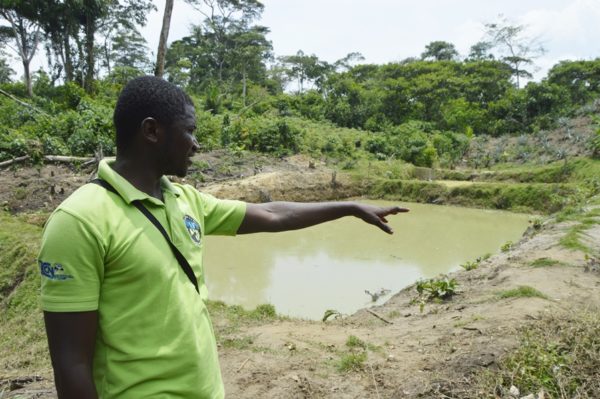
A fish pond being set up by the rural development team and a local pilot farmer.
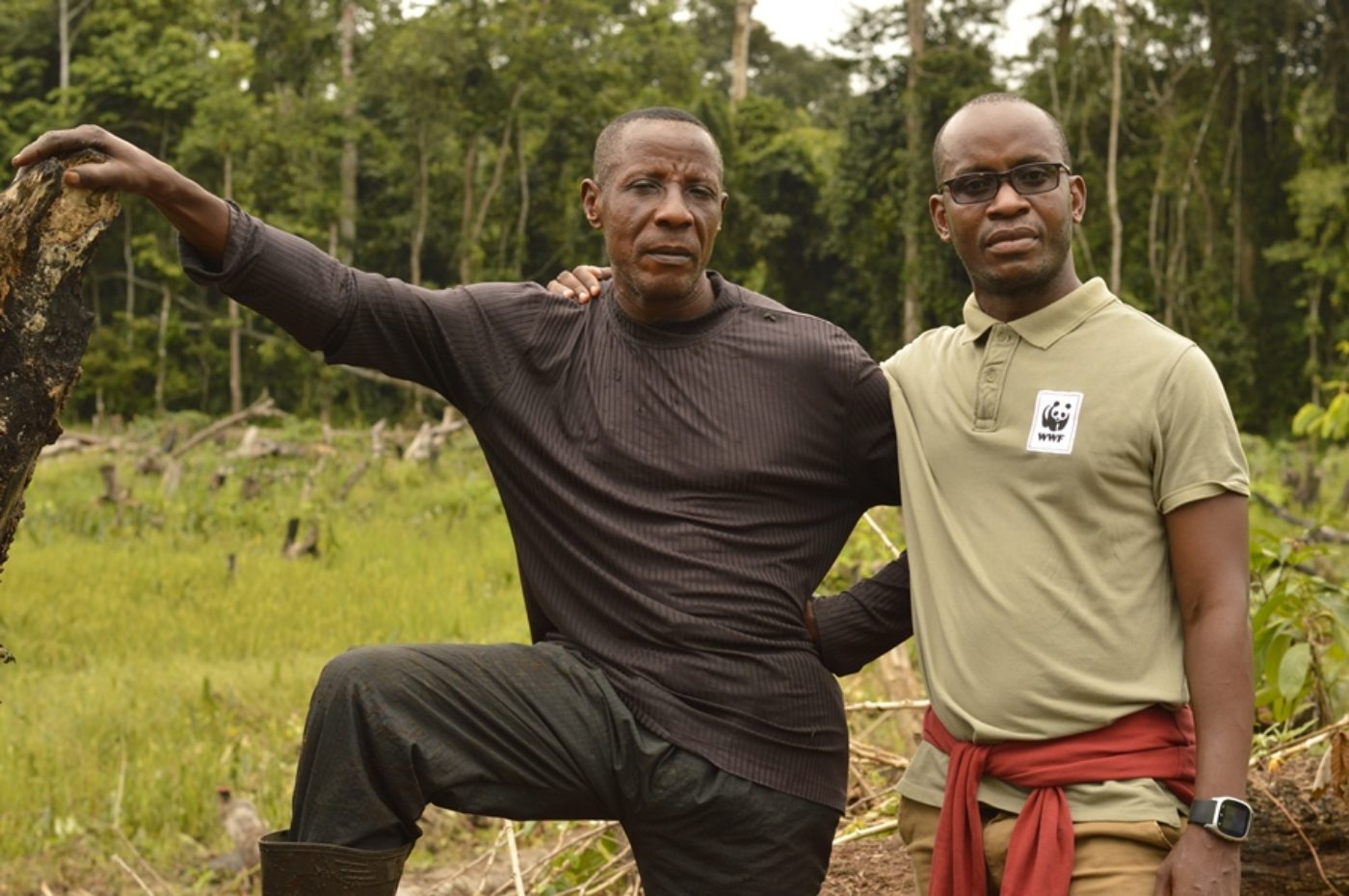
Steve Ibamba and Papy Lolatui, Rural Development Officer of the SNP rural development team
Becoming a farmer
Papy Lolatui is a rural development officer at UGPNS. “Steve approached us. I was impressed by his curiosity to find out exactly what kind of farming we teach the model farmers. But it wasn’t his curiosity alone. He had a clear idea of what he wanted.”
For several months, while continuing as a ranger, Steve did not miss an opportunity to learn more and more about these new agricultural techniques. He wanted to be involved too, but he was aware that ne needed to be careful to avoid a failure and well understand how a farm works because no one just becomes a farmer overnight!
Farmers who, like Steve, were inspired by the model farmers initially targeted, are called “replicants”: that is, they have seen and changed to apply the improved farming methods.
55 “replicants” are currently identified in Monkoto.
Before you cultivate anything, you must first have a piece of land. In 2017, Steve acquired a 2.3-hectare site in the outskirts of Monkoto. The swamp-like terrain in a lowland is very suitable for growing rice. This is what he was advised.
Machine-free farming is hard enough, but Steve is tough and cannot be discouraged easily. He has confronted and controlled several times in the forest poachers more heavily armed than he and his men.
He is determined to start his project and nothing will stop him. He follows carefully the advice of the agricultural experts.
A satisfactory first harvest
Steve sowed the first rice on his land in October 2017 and collected the first harvest in December of the same year. Rice can be harvested three times in a year.
Compared to cassava, another important crop of the region, rice is much more profitable for sale: cassava can only be harvested once and the bulk of sales are made mainly in Mbandaka, 5 days down the river by boat. Rice, on the other hand, is mainly sold on site in Monkoto where the local variety is very popular.
After three harvests, a new sowing is done. Steve now knows how to keep the process going. With the money from the first harvests, he plans to add some additional activities to his field.
Steve says with satisfaction, “I think I can now think of my retirement a lot quieter. I would like other colleagues to follow my example because the security of a regular income from one’s own work is a guarantee of dignity and respect when one is no longer employed.”
Even when he no longer actively participates in the protection of the park, his farm will contribute to its conservation but in another form.
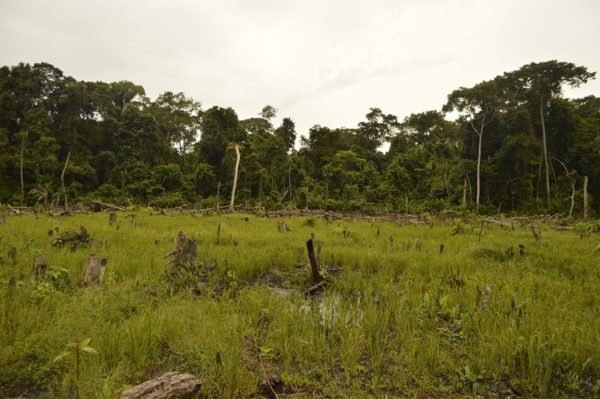
Rizière cultivée par Steve Ibamba
